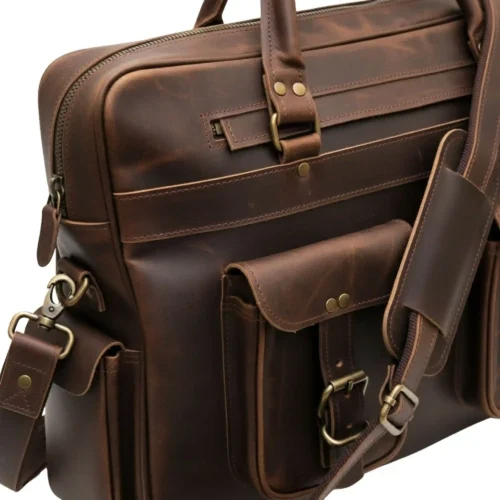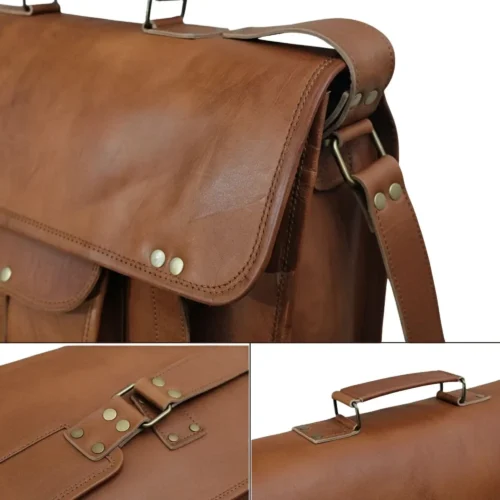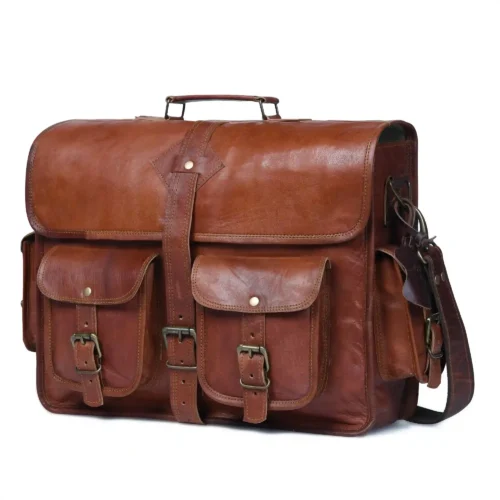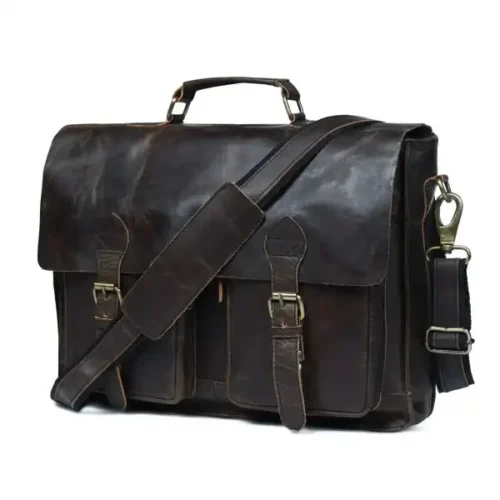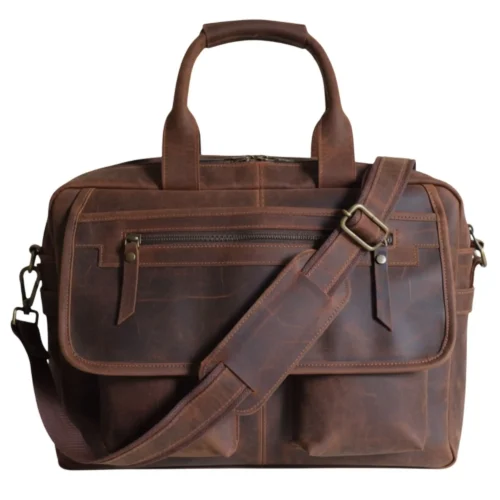
🚛 FREE SHIPPING | LIFETIME REPAIR WARRANTY | 20% Sale: “FREEDOM20”
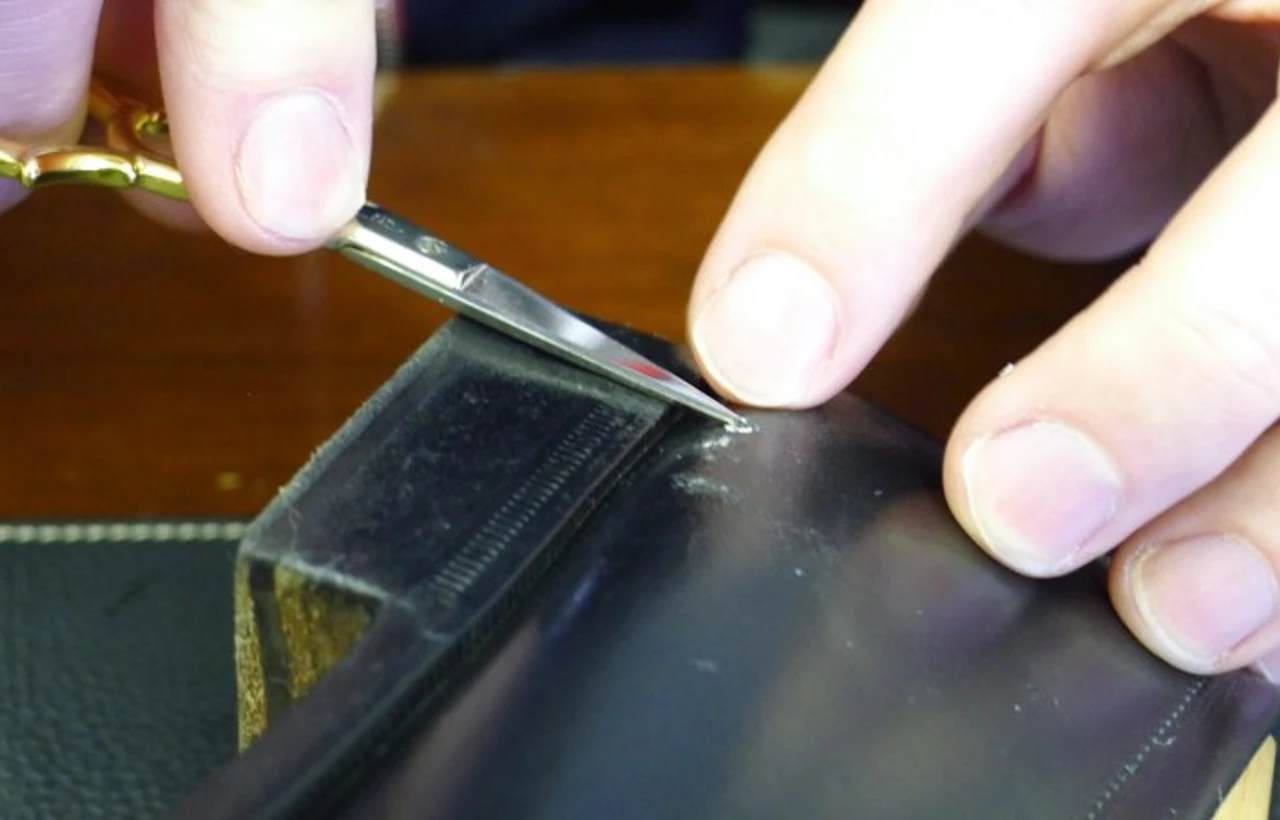
When faced with scuffed leather, fear not! Leather scuff repair is easier than you think. Start by cleaning the affected area with a damp cloth to remove dirt and debris. Next, apply a small amount of leather conditioner to soften the scuff leather and make it more pliable. For deeper scratches, consider using a leather repair kit that matches the color of your item. Gently buff the scuffed leather with a soft cloth until the scuff leather repair is seamless. With these simple steps, you can easily fix scuffed leather and restore its natural beauty.
Scuffed leather can be a blemish on the beauty of your favorite leather items, but fear not! There are several simple methods to tackle light scuffs and restore your leather’s luster. Here’s how you can address those pesky scuffs using common household items:
Using a Blow Dryer
Begin by cleaning the scuffed leather surface with a damp cloth to remove any dirt or debris. Then, set your blow dryer to a low or medium heat setting. Hold the blow dryer about six inches away from the scuffed area and gently move it back and forth. The heat will help soften the leather, allowing it to expand and minimize the appearance of the scuff. Be cautious not to overheat the leather, as excessive heat can damage it.
Using White Vinegar
White vinegar is a versatile solution for cleaning and restoring scuffed leather. Mix equal parts white vinegar and water in a small bowl. Dampen a clean cloth with the vinegar solution and gently rub it onto the scuffed area in circular motions. The mild acidity of the vinegar helps to break down dirt and grime while also softening the leather. Afterward, wipe the area with a damp cloth to remove any residue and allow it to air dry.
Using Petroleum Jelly
Petroleum jelly, such as Vaseline, can work wonders on light scuff leather marks. Apply a small amount of petroleum jelly to the scuffed area and gently massage it into the leather using your fingers. The petroleum jelly will moisturize the leather and help to diminish the appearance of the scuff. Allow it to sit for several hours or overnight, then buff the area with a soft cloth to remove any excess jelly and reveal the renewed shine of your leather.
Using Leather Cream
Opt for a vintage leather cream tailored to enrich and safeguard leather, ideal for addressing minor scuffs. Select a shade-matched high-quality cream suitable for your leather sling bags for women. Gently massage a small quantity onto the scuffed spot using circular motions. Let the cream seep into the leather for a few minutes, then buff the area with a dry, clean cloth to eliminate surplus cream and enhance the leather’s luster to a stunning sheen. Additionally, ensure to remove mold from leather prior to applying any treatment to maintain the leather’s integrity.
By employing these simple yet effective methods, you can easily fix scuffed leather and restore your favorite leather items to their former glory. Remember to always test any cleaning or repair method on a small, inconspicuous area of the leather first to ensure compatibility and avoid any unwanted damage. Additionally, while these methods are suitable for regular leather, special care should be taken when dealing with delicate materials like suede leather or patent leather. If mold is present, ensure to remove mold from leather before proceeding with any repair techniques.
Dealing with more serious scuffed leather issues requires a bit more effort and specialized care. Here are some effective methods to address serious surface scuffs and restore your leather items to their former glory:
Using Leather Glue
For deep and serious scuff leather damage where the surface is torn or ripped, leather glue can be a lifesaver. Clean the affected area thoroughly and allow it to dry completely. Apply a small amount of leather glue to the edges of the scuff and press them together firmly. Hold the edges in place until the glue sets. Be sure to follow the manufacturer’s instructions for the specific type of leather glue you’re using. Once the glue has dried, gently buff the area with a soft cloth to smooth out any rough edges.
Using a Color Repair Marker
If the scuffed leather has caused color loss or discoloration, a color repair marker can help to restore the original hue. Choose a marker that matches the color of your leather item as closely as possible. Carefully apply the marker to the scuffed area, layering it gradually until the color blends seamlessly with the surrounding leather. Allow the marker to dry completely before assessing the results. You may need to repeat the process several times to achieve the desired color match.
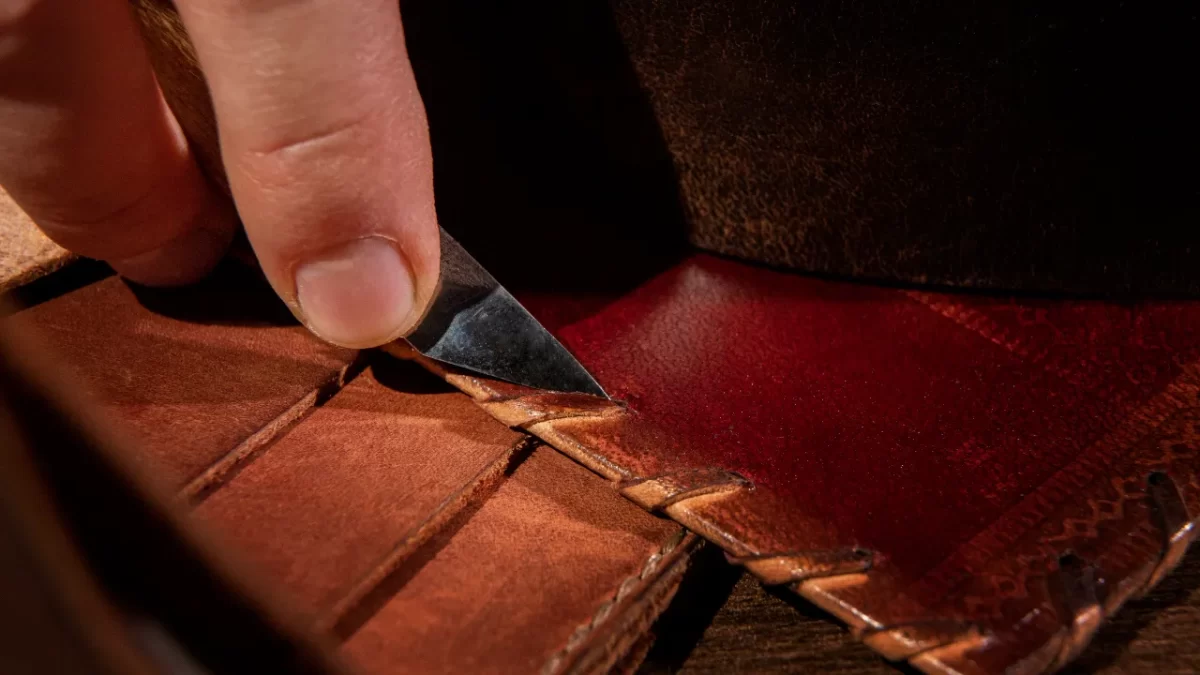
Using Leather Cream
Even for serious scuff leather damage, leather cream can still be beneficial in nourishing and conditioning the leather. After repairing any tears or color loss, apply a generous amount of leather cream to the entire surface of the item. Use a soft cloth to gently massage the cream into the leather, focusing on the areas that were previously scuffed. Leather cream helps to moisturize the leather and restore its suppleness, making it less prone to future damage.
When faced with deep scratches and scuffs on your cherished leather items, it’s essential to take a more intensive approach to scuff leather repair. Here’s a step-by-step guide to tackling those stubborn imperfections:
Using a Leather Repair Kit
Investing in a quality leather repair kit can make all the difference in addressing deep scuffed leather damage. These kits typically contain everything you need to mend tears, fill in scratches, and restore color to your leather items. Follow the instructions provided with the kit carefully, selecting the appropriate tools and materials for the specific type of damage you’re addressing. Apply the leather repair compound generously to the scratched or scuffed area, ensuring that it fills in any deep grooves or indentations.
Applying Filler
To address deeply etched scratches or gouges in leather, utilizing a filler can effectively even out the surface. Follow the manufacturer’s guidelines to prepare the filler mixture and use a spatula or applicator tool to apply it onto the affected area. Ensure an even distribution, meticulously filling in any crevices or gaps present. Allow ample time for the filler to thoroughly dry before advancing to the subsequent steps in the scuff leather repair process. Prior to any repair efforts, it’s essential to remove mold from leather to maintain the material’s integrity.
Sealing the Repair
Once the filler has dried, it’s essential to seal the repair to protect it from further damage and ensure its longevity. Apply a thin layer of sealant over the repaired area, using a brush or sponge applicator. The sealant will help to lock in the filler and provide a protective barrier against moisture, dirt, and wear. Allow the sealant to dry thoroughly before proceeding to the final step.
Using Leather Cream
After completing the repair process, it’s crucial to nourish and moisturize the leather to keep it looking its best. Apply a generous amount of leather cream to the entire surface of the item, focusing on the repaired area. Use a soft cloth to gently massage the cream into the leather, ensuring that it penetrates deeply and restores suppleness. Leather cream helps to hydrate the leather, diminish the appearance of scratches, and prevent future damage.
By following these steps and utilizing the appropriate tools and materials, you can effectively fix scuffed leather and restore your favorite leather items to their former glory. While these techniques are suitable for most leather scuff repair needs, it’s essential to take extra care when dealing with delicate items such as women’s leather sling bags or vintage messenger bag leather, which may require specialized treatments or professional assistance.
By employing these methods, you can effectively fix scuffed leather and extend the lifespan of your favorite leather items. Remember to take extra care when dealing with serious surface damage, and always test any repair products on a small, inconspicuous area first to ensure compatibility. While these methods are effective for most leather scuff repair needs, special attention should be given to addressing other issues such as leather water marks or stretch leather, which may require specific treatments or professional assistance. Additionally, regular maintenance with a suitable bag cleaner leather can help prevent scuff leather and keep your items looking their best for years to come.
When you’re in a pinch and need to address scuffed leather quickly, there are several handy methods you can try at home. These quick fixes can help minimize the appearance of scuffs and restore your leather items to a more presentable condition:
Method 1: Use a Hair Dryer
Start by cleaning the scuffed leather surface with a damp cloth to remove any dirt or debris. Then, set your hair dryer to a low or medium heat setting. Hold the hair dryer about six inches away from the scuffed area and move it back and forth in a gentle, sweeping motion. The heat from the dryer will help to soften the leather, allowing it to expand and diminish the appearance of the scuff. Be careful not to overheat the leather, as excessive heat can cause damage.
Method 2: Use White Vinegar
White vinegar is a versatile solution for cleaning and restoring scuffed leather. Mix equal parts white vinegar and water in a small bowl. Dampen a clean cloth with the vinegar solution and gently rub it onto the scuffed area in circular motions. The mild acidity of the vinegar helps to break down dirt and grime while also softening the leather. Afterward, wipe the area with a damp cloth to remove any residue and allow it to air dry.
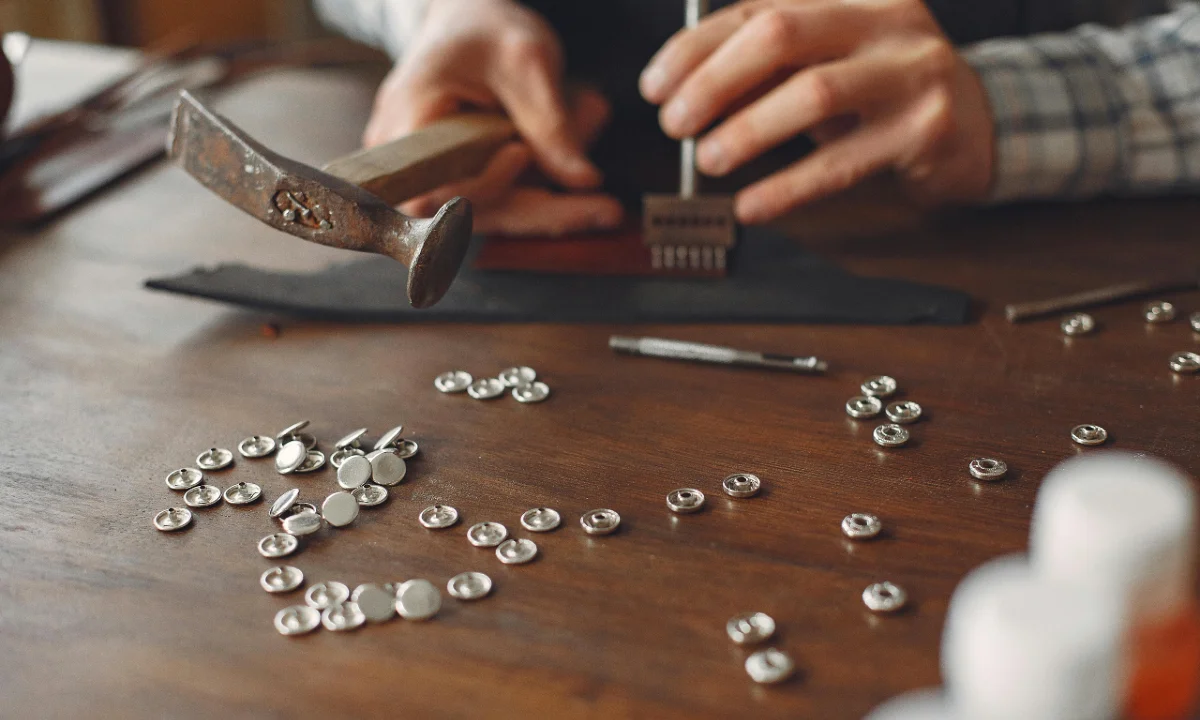
Method 3: Use Petroleum Jelly
Petroleum jelly, such as Vaseline, can work wonders on light scuff leather marks. Apply a small amount of petroleum jelly to the scuffed area and gently massage it into the leather using your fingers. The petroleum jelly will moisturize the leather and help to diminish the appearance of the scuff. Allow it to sit for several hours or overnight, then buff the area with a soft cloth to remove any excess jelly and reveal the renewed shine of your leather.
Method 4: Use Recoloring Balm
When faced with deeper scuffs altering leather’s hue, a recoloring balm offers an effective remedy. Opt for a balm matching your item’s shade, then generously apply it to the scuffed region using a clean cloth or sponge. Work the balm into the leather in circular motions, ensuring uniform coverage across the entire affected area. Allow the balm to thoroughly dry before gently buffing the area with a soft cloth. This process seamlessly blends the color and aids in scuff leather repair. Before initiating any repair measures, it’s vital to remove mold from leathe to preserve its integrity.
By trying these quick fixes, you can easily fix scuffed leather and restore your leather items to their former glory in no time. While these methods are suitable for most leather scuff repair needs, it’s essential to take extra care when dealing with delicate items such as women’s leather travel bags or vintage messenger bags, which may require specialized treatments or professional assistance.
When dealing with minor scratches on scuffed leather, leather glue can be a practical solution to address the issue effectively. Leather glue provides a strong and durable bond, making it ideal for repairing small imperfections without compromising the integrity of the leather.
To begin the leather scuff repair process, start by cleaning the scuff leather surface with a damp cloth to remove any dirt or debris. Then, carefully apply a small amount of leather glue to the scratched area using a precision applicator or a cotton swab. Ensure that the glue covers the entire scratch evenly and fills in any gaps or crevices.
Once the leather glue has been applied, gently press down on the scratched area to ensure proper adhesion. Allow the glue to dry completely according to the manufacturer’s instructions. Once dry, the leather glue will create a seamless bond, effectively fixing scuffed leather and restoring the appearance of your leather item.
Whether it’s a leather sling bag for women, a women’s leather duffle bag, or a leather sling bag men’s, using leather glue for minor scratches is a convenient and cost-effective way to preserve the beauty and longevity of your leather accessories.
Preventing scuffed leather is essential to maintaining the pristine condition of your leather items and minimizing the need for leather scuff repair. Here are some effective strategies to help keep your leather accessories looking their best:
Regular Cleaning:
Dirt and debris can contribute to scuff leather marks, so it’s crucial to clean your leather items regularly with a soft cloth or brush. Removing surface dirt can help prevent scratches and scuffs from occurring.
Avoid Rough Surfaces:
Be mindful of where you place your leather items to avoid exposing them to rough or abrasive surfaces that can cause damage. Use protective covers or mats when setting down leather messenger bags for women or vintage leather messenger bags on rough surfaces.
Proper Storage:
When not in use, store your leather items in a cool, dry place away from direct sunlight and humidity. Avoid overcrowding in storage spaces to prevent items from rubbing against each other and causing scuff leather marks.
Use Protective Products:
Consider applying a leather conditioner or protector to your leather items to provide an additional layer of protection against scuffs and scratches. These products can help maintain the suppleness and resilience of the leather over time.
Handle with Care:
Treat your leather items gently and avoid rough handling or excessive force that could lead to scuffed leather. Be mindful of how you carry or store your items to minimize the risk of accidental damage.
By following these preventive measures, you can help prolong the lifespan of your leather accessories and reduce the need for scuff leather repair. With proper care and attention, your leather items can maintain their beauty and durability for years to come.
In conclusion, addressing scuffed leather and ensuring its longevity is essential for maintaining the beauty and functionality of your leather goods. Whether it’s a messenger bag leather women’s accessory or a classic leather hobo bag’s, understanding how to fix scuffed leather and prevent further damage is key.
Effective leather scuff repair techniques, such as using leather glue, recoloring balm, or a leather repair kit, can help restore your leather items to their former glory. Quick fixes like using a hair dryer, white vinegar, petroleum jelly, or recoloring balm are handy for minor scratches and scuffs.
Preventive measures play a crucial role in minimizing scuff leather damage in the first place. Regular cleaning, avoiding rough surfaces, proper storage, using protective products, and handling leather items with care can all contribute to reducing the need for scuff leather repair.
By implementing these strategies, you can prolong the lifespan of your leather accessories, ensuring they remain stylish and functional for years to come. Remember, taking proactive steps to address scuffed leather and prevent future damage is key to preserving the beauty and durability of your beloved leather items.
FAQs
Scuffed leather refers to leather that has sustained surface damage, typically in the form of scratches, marks, or abrasions. These imperfections can detract from the appearance of leather items, necessitating scuff leather repair to restore their original condition. To fix scuffed leather, various methods such as using leather glue, recoloring balm, or a leather repair kit can be employed. Additionally, it’s crucial to address any underlying issues, such as remove mold from leather, to prevent further deterioration and maintain the integrity of the leather.
To fix a scuff on leather, start by cleaning the affected area with a damp cloth. For minor scuffs, apply a small amount of leather conditioner and gently rub it into the scuffed area. For deeper scuffs, use a leather repair kit, filling the scratch with the provided compound and allowing it to dry. Once dry, buff the area with a soft cloth. If mold is present, address it with a mixture of vinegar and water before repairing the scuff. These steps ensure effective scuff leather repair and maintain the quality of the leather while fixing scuffed leather.
Yes, scratched leather can often be repaired. Using scuff leather repair methods like applying leather glue, using a recoloring balm, or employing a leather repair kit can effectively fix scuffed leather. These techniques help to fill in scratches, restore color, and maintain the integrity of the leather. Additionally, it’s important to address any underlying issues like removing mold from leather to prevent further damage and ensure the longevity of the repaired leather item. With proper care and attention, scratched leather can be restored to its original condition.
A scuff mark is a superficial abrasion or scratch on the surface of leather, often resulting from friction or contact with rough surfaces. These marks can detract from the appearance of leather items, but they are typically repairable. Various scuff leather repair methods, such as using leather glue, recoloring balm, or a leather repair kit, can effectively fix scuffed leather by filling in the scratch and restoring the leather’s texture and color. It’s important to address any underlying issues like removing mold from leather to prevent further damage and ensure the successful repair of the scuff mark.

